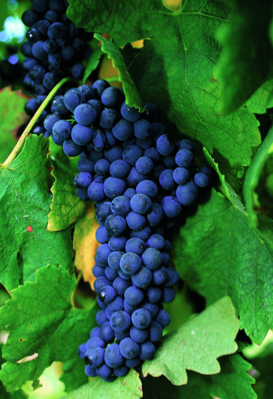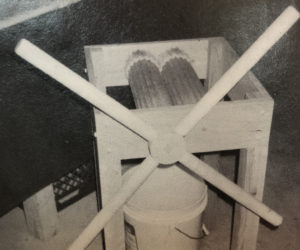Hydrometer: An inexpensive and widely available analytical device that measures the specific gravity (relative density) of a solution. Very useful to measure the amount of sugar (in Balling or degrees Brix) in a juice or wine. Because density depends on temperature, a thermometer reading of the solution being tested is critical for accurate results. Hydrometers are calibrated to be used at 60° F.
Invert sugar: Common sugar (sucrose) that has been broken down into fructose and glucose. It does not contain dextrins. One pound of invert sugar is only two-thirds as sweet as cane sugar, so you have to use 50 percent more to achieve the same sweetness.
Lactic acid: An acid present in wines that have undergone a malolactic fermentation, in which the malic acid (see below) has been transformed into lactic acid by malolactic bacteria. Lactic acid is less acidic than malic acid.
Malic acid: A naturally occurring grape acid that decreases with ripening. It is one of the principal components of a wine’s total acidity. If a wine is too acidic (the grapes hadn’t ripened fully), it can be de-acidified by a malolactic fermentation, in which the malic acid will get metabolized by malolactic bacteria and excreted as lactic acid.
Oxidation: Chemical term relating to the reaction of juice, must, or wine with oxygen. Typical negative side effects of such reactions are browning of wine and juice and “cooked” flavors and aromas. Limited amounts of oxidation are actually healthy for wine, because yeast need oxygen to grow during the initial stages of fermentation. Protracted, slow oxidation is a key physiological change that takes place when a wine ages.
Sulfur dioxide: In the form of potassium metabisulfite crystals, liquid sulfur dioxide, or sulfur dioxide gas, sulfur dioxide is an effective and safe preservative, antioxidant, and antimicrobial agent that has been used for millennia to facilitate the winemaking process. It is a respiratory irritant in high concentrations, so it should always be handled with care. Usual levels of free sulfur dioxide in table wines is about 20 to 40 parts per million.
Sweet wine: Any wine in which there is perceptible residual sugar. Sugar is perceptible, depending on the individual taster and the composition of the individual wine, at about 1.5 percent.
Titratable acidity: Also known as “total acidity,” titratable acidity is the total amount of all hydrogen ions (what makes acids “acidic”) in a solution of juice, must, or wine. It is the measure of all aggregate acids and a sum of all volatile and fixed acids.
Titration: A scientific analytical method used to determine total (or titratable) acidity. A strong base (such as sodium hydroxide), the opposite of acid, is added to a must, juice, or wine in measured amounts. If an indicator chemical (such as phenolphthalein) has been added to a sample of the liquid being tested, then a color change will occur at the point when all of the available hydrogen ions in the acids have been neutralized by the base. The total (or titratable) acidity of the must, juice, or wine can then be determined in relation to how much base it took to neutralize all of the acids in the wine.
Wild yeast: Sometimes referred to as “natural yeast,” wild yeast are the yeast fungi that are present naturally on grapes, on winery equipment, and just in the air itself. Many wineries rely on these itinerant microorganisms to start their wine fermenting, but since these yeast strains are far from uniform in population and “good” fermenting ability, using “natural fermentation” (and not inoculating with a proven pure culture) can be a serious risk. Wild yeast have been known to cause stuck fermentations, high hydrogen sulfide concentrations, and visual defects in finished wine, as well as a host of other spoilage reactions.




